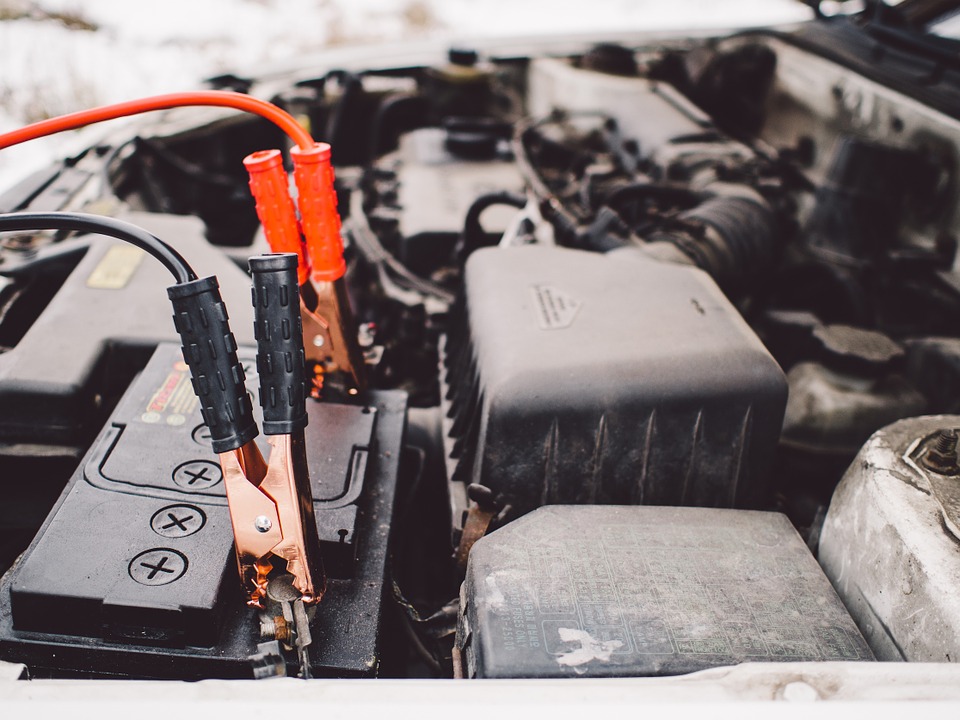Summary
– Starter cables: definition and description
– How do I choose boot cables?
– How to use boot cables?
– Precautions to take before using jumper cables
Starter cables are a great help when your vehicle refuses to start because of a discharged battery. Here is an overview of this handy and accessible car accessory, which is best to always keep in the corner of the trunk of your car.
Starter cables: definition and description
Definition
The jumper cable, also known as a “starter clamp,” is an automotive accessory designed to connect the terminals of a failed battery to those of a working battery. Its role is to transfer electrical power to the discharged battery to start a failed vehicle.
Good to know: If your vehicle still won’t start after using the starter clamps, or if your battery can’t hold the charge, you’d better replace it quickly.
Description
This device consists of two cables, each with a clamp at both ends. So there are four clamps. Each cable contains a copper conductor wire covered with a sheath: red and the other black. The purpose of these colors is to differentiate the poles (negative and positive). The length of the starter cables is generally between 3 and 6 m.
Each clamp is equipped with an insulating handle of the same color as the sheath.
Good to know: it is strongly recommended to store the starter clamps in a specific case or a suitable cover to ensure their protection.
Read more here: Testing a Battery.
How to choose jumper cables?

The choice of the type of starter cables depends on the vehicle’s engine (petrol or diesel). To choose the appropriate starter clamps for your car, you must take into account the indications on the battery:
– the current expressed in amperes (A);
– the voltage expressed in volts (V), which is generally 12 or 24 V for a car;
– the charging capacity expressed in amperes per hour (A/h).
These indications must also be mentioned on the packaging of the starter cables to make a choice easier. Depending on the battery amperage, the corresponding cable cross-sections are as follows:
– less than 200 A: 10 mm²;
– between 200 and 300 A: 16 mm²;
– between 300 and 600 A: 25 mm²;
– between 600 and 700 A: 35 mm²;
– from 700 A: 50 mm².
Good to know: the starter clamps are designed for 12 V or 24 V or both voltages.
Read more here: Recharging a Battery.
How do I use jumper cables?
Before starting your vehicle with the appropriate cables, you must first have a second vehicle with the same engine or find a motorist willing to help you.
Once you have found the right one, here’s how to proceed:
1. Position the two vehicles side by side or face to face so that the cables’ length will allow the two batteries to be connected.
2. Turn off the motor.
3. Make sure that both vehicles are at the dead point with the handbrake applied.
4. Open both covers, then remove the caps covering the terminals of each battery.
5. Position the two cables by connecting one black clamp to the negative (-) terminal of the service battery and the other black clamp to the ground of the failed vehicle. Then position the red clamps on the positive (+) terminals of each battery.
6. Start the tow vehicle, then turn on the ignition of the disabled car – a few turns of the key may be required. As soon as the engine starts, let the engine idle for a few minutes and then accelerate smoothly.
7. Without shutting off the engine, disconnect the starter cables, then replace the battery terminal guards. This must be done on both vehicles.
Good to know: After several attempts with the jumper cables, if the vehicle still does not start, it could be a connection problem, a starter clamp that is not suitable for the battery type, or even a battery or alternator failure.
Read more here: Changing a Battery.
Precautions before using jumper cables
Before using jumper cables to troubleshoot a vehicle, certain precautions should be taken.
The two batteries to be connected must belong to vehicles with the same engine. This ensures that the electronic systems are not compromised.
Likewise, both batteries must be of the same voltage, as a much higher voltage on one of the batteries can damage the vehicle’s electronics. Thus, a 12 V battery must be connected to an equivalent battery unless the starter clamps are specifically designed for both types of voltage (12 and 24 V).
Never attempt to start a vehicle with a frozen battery, as this could cause an explosion. Some batteries are equipped with an indicator light to check the condition of the internal fluid. This indicates that it is frozen.
Avoid connecting the two black clamps to the two negative (-) poles. Since a battery produces hydrogen, this type of improper connection could cause sparks that could be enough to cause the battery to explode or ignite. For this reason, it is advisable to connect the black clamp for the failed vehicle to the bare ground (not the battery), such as a bolt or other metal part.
Good to know: Using improper jumper cables can cause a short circuit that can lead to a severe accident. This happens when too much current is transferred from one battery to another. If you are not conversant with the mechanics, call your service center. A professional will come to help you jump start your car.


1 comment
[…] How to Choose and Use Starter Cables […]